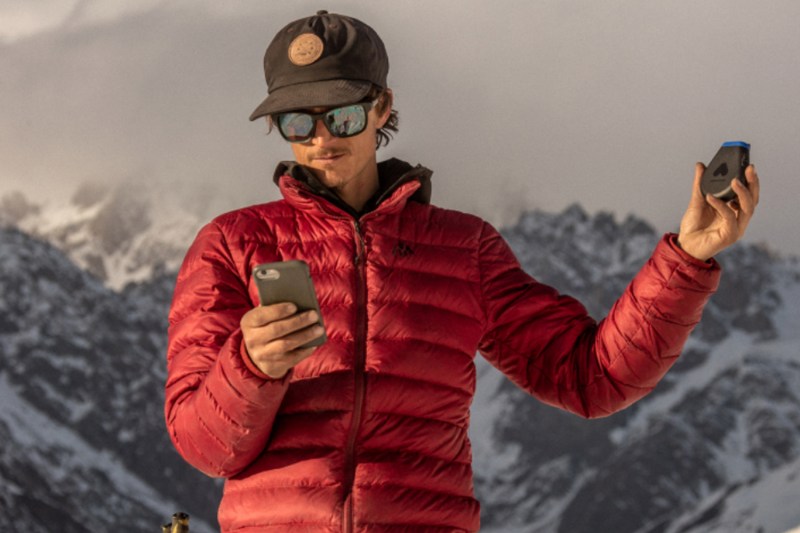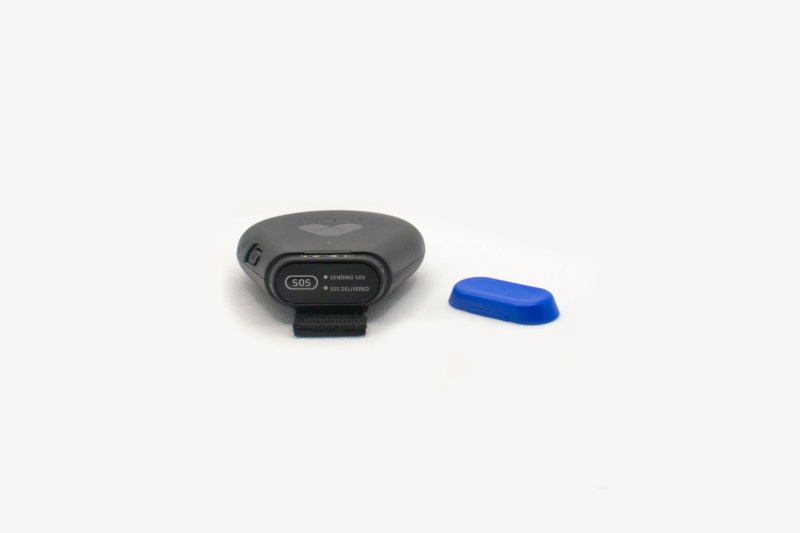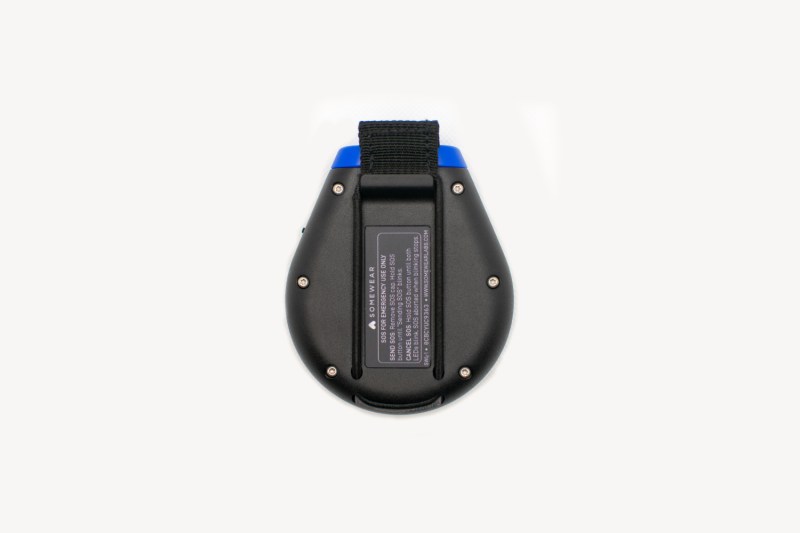The backcountry is where we go to get away from it all: Out here, there is no email to answer, no traffic to sit in, and no advertisements constantly vying for our attention. It’s a time and place to explore, relax, and appreciate the quiet beauty of a simplified life. With that being said, the wilderness can also be a dangerous and unforgiving place, and when an unexpected emergency arises 100 miles from the nearest Starbucks, chances are your smartphone won’t be of much use when it comes to summoning help. That’s where a handheld outdoors GPS comes into play.
I’ve spent the last month with the Somewear Global Hotspot, an emergency GPS with a clever trick up its sleeve: It turns your smartphone into a two-way satellite messenger and real-time location tracker that works from anywhere on the planet. Here’s my take on the Somewear for anyone in the market for a backcountry GPS.

Related Guides
Somewear Labs Global Hotspot Overview

At first glance, the Somewhere Global Hotspot doesn’t look like much. Weighing in at just 4 ounces and measuring roughly three inches in diameter, its little tear-shaped frame houses no screen, no antenna, and no interface save for a single power button and a (well-protected) SOS button. Compared with other popular two-way messengers like the Garmin inReach Mini, the Somewhere Global Hotspot appears deceptively simple, and that’s kind of the point.
Download the Somewear app to your smartphone of choice, however, and you’ll start to see the appeal of the Global Hotspot. From your phone screen, you’ve got an impressive range of intuitive functions and controls. No more simplified LCD display, bare-bones maps, or painfully slow push-button interface: Everything is full color, touchscreen operated, and easy to access. It’s a breath of fresh air for anyone who’s ever typed out a custom message on a GPS one painstaking letter at a time, but for those who aren’t familiar with the current range of GPS options available, you’ll find no learning curve here: It’s just like using any other app on your phone.
Pros: Why We Like The Somewear Global Hotspot
First and foremost, the main selling point of the Somewear GPS for us is the smartphone interface. For all the reasons stated above, it’s just hands down the quickest and easiest GPS on the market for two-way messaging, location tracking, and real-time weather updates.
The second important feature of the Global Hotspot is its coverage area: Somewear uses the Iridium satellite network, which is the largest and most reliable civilian satellite network on the planet — or off the planet. The Iridium network provides true worldwide coverage from Greenland to Antarctica and everywhere in between. It’s the same network used by major players like Garmin and Bivy, and there’s a reason for that.
- 1. Any map area can be selected and downloaded for use off-grid.
- 2. Tracking intervals can be adjusted on the fly to save data.
- 3. Real-time weather reports are top-notch and in full color.
Another major pro of the Global Hotspot is its budget-friendly data plan: All outdoors GPS units require a data plan of some sort, and Somewear’s plans are currently the most affordable on the market. Their entry-level “ultralight” plan costs less than $10 a month, but if you want more data/messaging than the basic plan provides, there are three higher tiers of coverage, all of which are also comparatively less expensive than the competition.
Other perks of the Somewear unit include an impressive 10-day battery life on a single charge, top-notch waterproofing and dust protection, streamlined two-way messaging that automatically defaults to cellular and/or Wi-Fi coverage when available (to save your satellite data), and compatibility with OnX navigation systems — allowing hikers, hunters, and offroaders to share waypoints with other Somewear users.
Cons: Things To Know Before Buying One Yourself
All things considered, I highly recommend the Somewear Global Hotspot for anyone seeking an affordable and intuitive GPS solution that includes two-way messaging. However, there are a few drawbacks that keep the Global Hotspot from being a “perfect” product that I’ll share with you here.
Starting with the obvious, pretty much every feature of the Global Hotspot (apart from SOS activation and location tracking) is dependent on your smartphone. That means that although the Somewear unit itself can last over a week on a single charge, your ability to message, check weather, and view maps is ultimately dependent on your phone’s battery life.

Depending on the length of your trip and your off-the-grid electronics habits, this may or may not be an issue for you, but you’re still relying on two electronic devices rather than one to stay connected in the backcountry.
It’s also worth pointing out that while Somewear’s data subscription plans are by far the most attractively priced in the industry, the charges for exceeding your monthly data plan are higher than others. For example, if you stick to their least expensive “ultralight plan” any messages you send over the 10 message limit will cost you $1 each, which is double the cost of overages on a Garmin plan.
Stepping your plan up to the second level (which is still impressively inexpensive at $15 a month) doubles your message limit while also cutting your overage fees down to Garmin rates ($0.50 each), so even at Somewear’s second tier, the Global Hotspot is still the best game in town.
Lastly, and this is definitely a nit-pick, but the elastic strap/hook mounting system of the Global Hotspot isn’t something you want to depend on. When mounted to the shoulder straps of my pack, a tree branch snag was all it took to dislodge the Somewear and send it falling to the hard rocks underfoot. Ultimately you should store these devices inside your pack when on the go anyway, but just know the strap isn’t for use “on the move.”
FAQs About The Somewear Global Hotspot
The Global Hotspot is a coveted piece of outdoor gear, which explains why Somewear has such a challenge keeping them in stock. Here are some of the most common questions about the Global Hotspot I evaluated while in the field.
Do I Need My Smartphone To Use the Global Hotspot?
Technically the answer here is no, but as stated above, the features of the device are extremely limited without a smartphone interface connected. You’re still able to activate the emergency SOS feature without a phone, and you can also turn location tracking on and off using the power button, but everything else requires a phone.
Is There an Activation Fee?
Every GPS comes with an activation fee, and the Global Hotspot is no different. If you’re sticking with the Ultralight plan, you’re looking at $25, whereas the higher-level data plans all charge a flat $35 fee. The good news is it’s a one-time fee, so regardless of how often you pause or resume your monthly subscription, you’ll never have to pay to reactive the unit.
How Close Does My Phone Need To be To Stay Connected?
Somewear uses a Bluetooth Low Energy connection to maximize the battery life of both the hotspot and your phone, so connectivity is limited to roughly 10 feet. I experienced no connectivity issues, whether the GPS was in my pocket, my pack, or in the luggage on my bike.
Who Can I Message Using the Somewear Global Hotspot?
Another high point of this GPS: You can send a message from the Somewear app to literally anyone saved in your phone’s contact list. Whether or not they download the Somewear app themselves is completely optional as Somewear automatically converts messaging through the app into regular texts anyone can read and reply to.
Who’s It For? Should You Buy a Somewear Global Hotspot?
In short, I think the Somewear Global Hotspot is a great buy for anyone that needs an off-grid GPS and wants two-way messaging as part of the package. The Somewear unit is comparatively less expensive than other popular options on the market, and its data subscription plans are undoubtedly the most budget-friendly.
The overall ease of use of this GPS when paired to a smartphone, from its tracking features to its two-way messaging, is arguably the best in the business. The fact that it leverages the Iridium satellite network is the icing on the cake that makes it just as viable for a first-time backpacker in the states as it is for a mountaineering expedition in the Swiss Alps.






